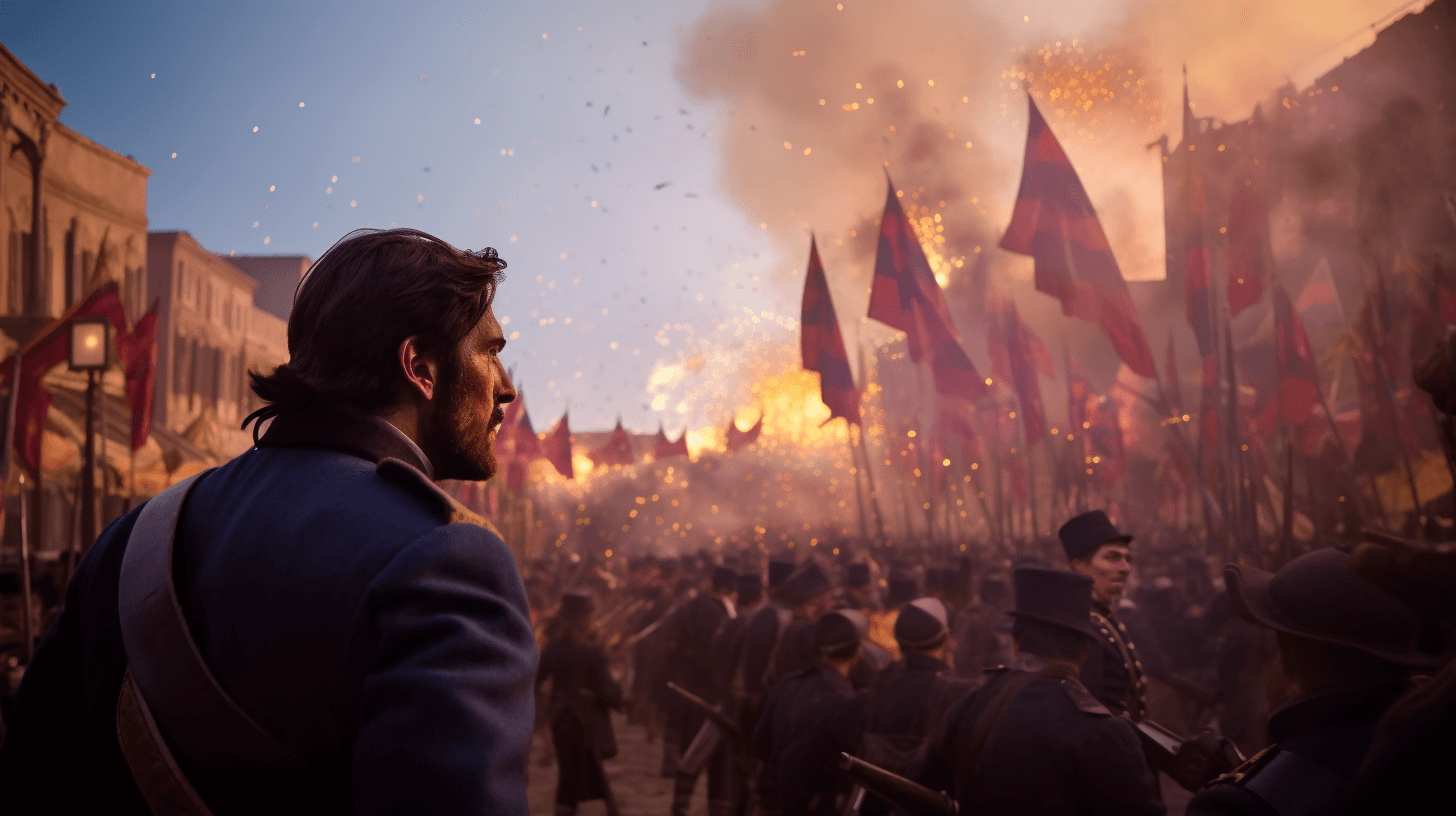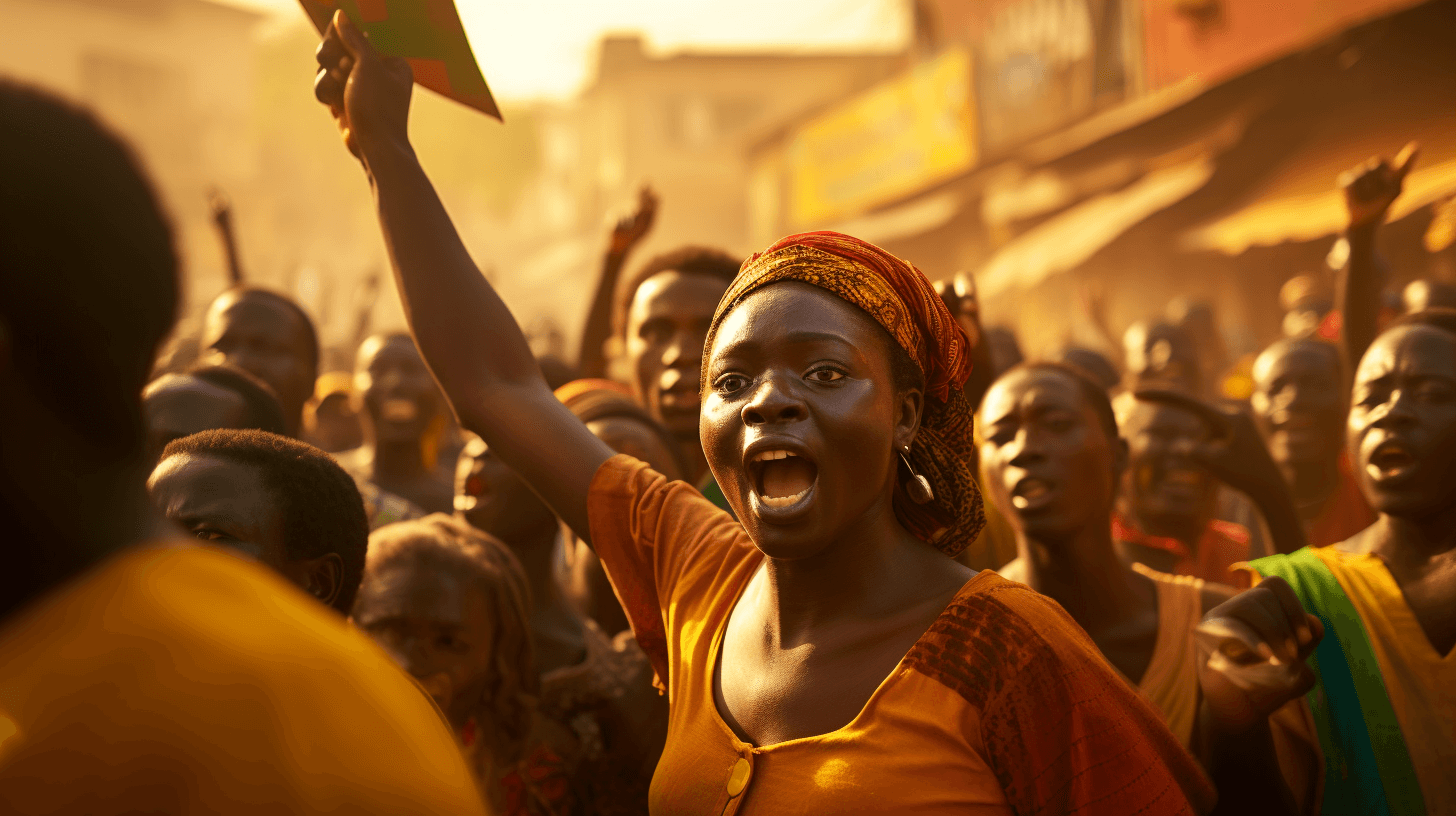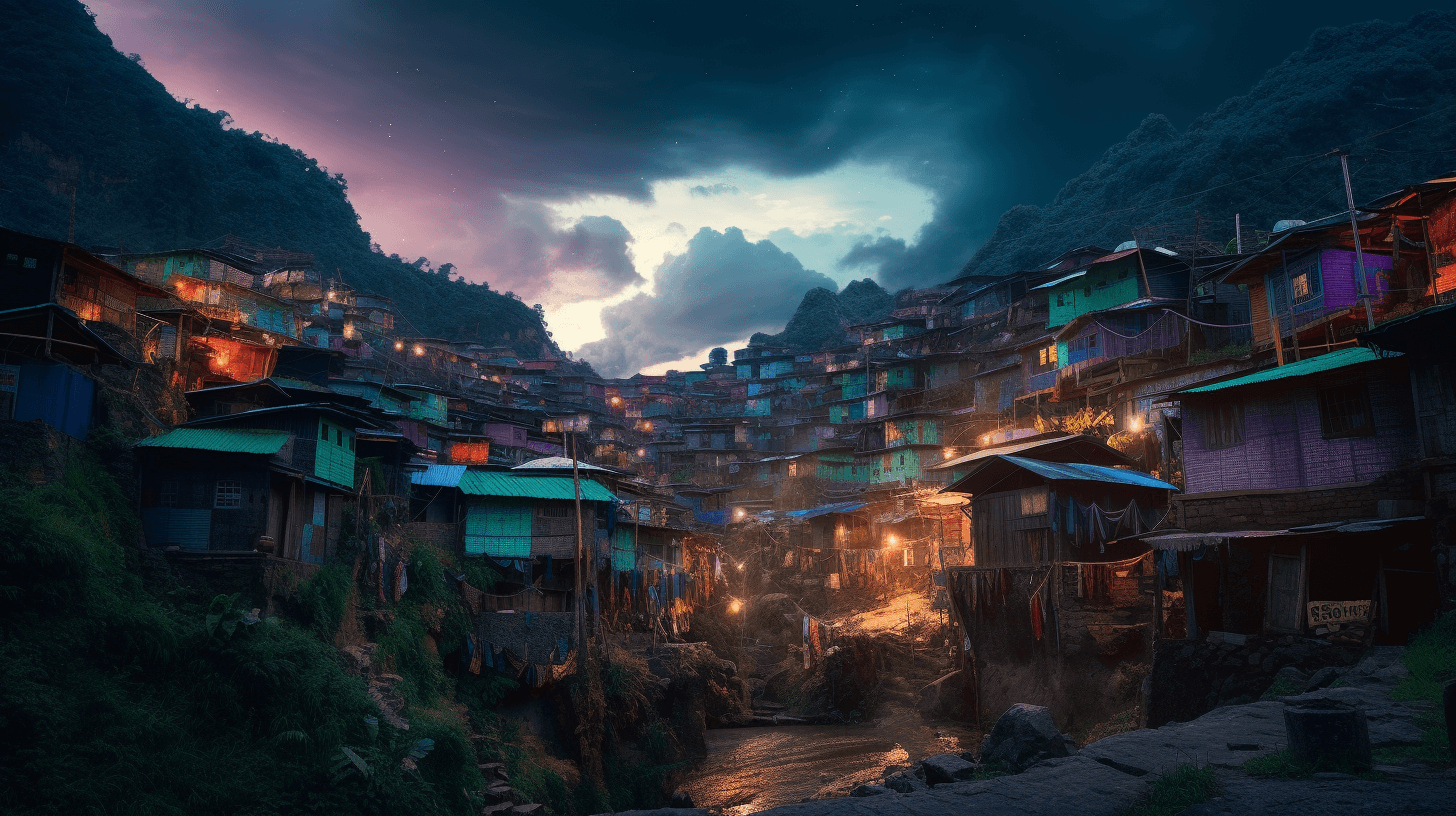😱 Da Scary Vote Tings – Chance fo’ Lose da Trace of Franco’s Kine People
⬇️ Pidgin | ⬇️ ⬇️ English
Right dea, Spain’s left-wing govnah stay try speed up da diggin’ up of da big kine graves from da bad kine times. If da right side win da election dis Sunday, 👎 dat kine work might pau. Firs’ time wen she wen hear ’bout da project fo’ dig up an’ find out who stay inside all da hundreds bodies from da Civil War – maybe even her own grandpa – Ángela Raya Fernández wen feel “choke hope, mean kine hope.” 🙏
Since she was small kid time, she always wen hear stories ’bout how her faddah’s faddah, José Raya Hurtado, wen get kapakahi during da Spanish Civil War, his body jus’ dumped any kine inside one ravine by da guys who stay wit Gen. Francisco Franco. She only ever wen know him from black-and-white photos: round glasses, his hair stay going back, an’ one solid look.
“We stay hope long time dat somebody can find him an’ give him one good kine burial,” Ms. Raya wen say, one soft-spoken, 62-year-old librarian. 📚
But get da general elections dis Sunday an’ da polls say da right-wing might win, an’ so Ms. Raya an’ her ‘ohana, plus thousands mo’, stay scared dat all da years tryin’ fo’ find their loved ones goin’ stop jus’ like dat. 😰
Da conservative Popular Party, wea some of da guys come from da Francoist times, wen promise fo’ repeal one memory law from last fall, passed by da current Socialist prime minister, Pedro Sánchez, dat was all about speeding up da diggin’ up. Plus, get chance fo’ one alliance wit da conservative guys an’ da far-right Vox party, who always stay against da trying fo’ address da bad kine stuff from befo’, an’ dat only make da fear mo’ big.
“Would be one total disaster,” Ms. Raya wen say, “one big step back.” ⏮️
Da back an’ forth ’bout da memory law show how da scary times from Spain’s 1936-39 Civil War an’ Franco’s time afta, dat wen end wit his death in 1975, still make da country all hamajang today. ⚔️
Fo’ some, Franco, one nationalist, wen help make Spain’s economy mo’ strong afta da war an’ served as one anti-Communist kine wall. But fo’ choke oddahs, his time was all about control, wit choke guys getting killed, thousands had to leave, an’ even had kids getting taken.
Get ’bout 100,000 people who wen get killed by Franco’s guys during an’ afta da Civil War, an’ dey stay buried in mo’ than 2,000 big kine graves all ova da place. Nobody wen dare mess wit those sites in one country wea Franco’s past wen always stay undah da rug. Da conservative guys, especially, wen say dat diggin’ up would only make da old kine wounds open up again.
Fo’ da left, da silence neva wen help, even wen make ’em mad. During da bad times, da Spain guys wen no can talk ’bout da killings. One amnesty law, passed in 1977, wen hope fo’ leave da past in da past, but fo’ real jus’ made forgetting one big part of da try fo’ heal one divided country moving to democracy.
“Wen be one culture of silence,” Agustín Gómez Jiménez, 49, one health worker, wen tell how his faddah wen long time refuse fo’ even show one picture of his own faddah, who wen get killed in 1936.
Mr. Gómez wen say his sistah wen need fo’ dig thru their faddah’s stuff fo’ finally find some pictures, five years ago. One of dem shows their grandpa on one beach, holding hands wit his small, soon-be-orphaned son. “I get chicken skin jus’ tinking my faddah wen hide da photos. He was dat traumatized,” he wen say. 😢
Da first tries fo’ deal wit da big kine graves wen start in 2007, wen one center-left prime minister, José Luis Rodríguez Zapatero, wen pass one “law of historical memory” dat wen give government support to da diggin’ up.
But da law wen take long time fo’ take effect an’ wen da conservative Popular Party wen take ova in 2011, da conservatives wen cut off da funding fo’ da law.
Wen take anodda ten years, da commitment of Spanish left-wing kine areas an’ last year’s law — dat wen create one list an’ one national DNA bank to help find an’ identify da bodies — fo’ da diggin’ up to finally get going.
Dose kine work stay obvious in Viznar, one small, whitewashed village in da mountains above Granada. Fo’ three years, one team of archaeologists stay diggin’ in da ravine wea Ms. Raya’s an’ Mr. Gómez’s grandfathers stay buried wit ’bout 280 oddah victims, including maybe even da Spanish poet Federico García Lorca.
One recent morning, da researchers wen stay bending over one 3-by-13-foot pit, using brushes an’ small blades fo’ carefully take out da dirt covering eight skeletons. Their backs an’ femurs stay all mixed up, show dat bodies wen get dumped one on top da oddah. Had some skulls wit round holes, show dat da victims wen get shot in da head. 💀
“Dis one page of our history dat was blank an’ dat we stay writing today,” Francisco Carrión Méndez, da archaeologist running da project, wen say, standing by da grave. Plenty family members, he explain, like find their loved ones an’ bury them again because “their dignity was stolen.”
Mr. Carrión pointed to photos of da victims dat da families wen hang on da nearby pines: one university rector wit slicked-back hair; one tough-looking barmaid. “Dey shouldn’t be forgotten,” he wen say.
But not everybody agree. At da entrance of da ravine, one sign giving respects to da victims wen get scribbled over wit graffiti reading “¡Viva Franco!” To which somebody wen answer: “Fascism no should be talked ’bout, should be destroyed.” 💔
“In Spain,” García Lorca once wen write, “da dead are more alive than da dead of any oddah country in da world.”
Until now, da bodies of 75 people wen get found in Viznar. Da time dat wen pass an’ no get records ’bout da killings make it hard fo’ figure out who stay who, so da researchers stay using bone samples fo’ do DNA tests in one Granada lab. Da first results supposed to come out dis fall. But choke family members scared might be too late.
“Who stay responsible fo’ da samples? Who?” Francisca Pleguezuelos Aguilar,“We remember. And we won’t forget,” said Francisca Castillo, a niece of one of the victims. “It’s a battle we have to fight.”
Spain’s battle over memory is one that every country with a contentious past has to wrestle with. But the promise of this work, to excavate not just bones but also painful truths, is arguably greater here than elsewhere, in the homeland of Picasso’s “Guernica,” where the scars of the past still remain visibly etched.
“That’s the paradox,” said Ms. Raya. “We have a long history of forgetting, but the body remembers.”
NOW IN ENGLISH
😱 The Scary Vote Things – Chance to Lose the Trace of Franco’s Kin People
Right there, Spain’s left-wing government is trying to speed up the excavation of the big graves from the bad times. If the right side wins the election this Sunday, 👎 that work might come to an end. The first time she heard about the project to dig up and find out who is inside all the hundreds of bodies from the Civil War – maybe even her own grandfather – Ángela Raya Fernández felt “a lot of hope.” 🙏
Since she was a child, she has heard stories about how her grandfather, José Raya Hurtado, was killed during the Spanish Civil War, and his body was dumped in a ravine by forces loyal to Gen. Francisco Franco. She has only known him through black-and-white photos: round glasses, receding hairline, and a determined look.
“We have hoped for a long time that somebody could find him and give him a proper burial,” said Ms. Raya, a soft-spoken, 62-year-old librarian. 📚
But with the general elections this Sunday, and the polls indicating a potential victory for the right-wing, Ms. Raya and her family, along with thousands of others, fear that their years of searching for their loved ones might suddenly end. 😰
The conservative Popular Party, which has ties to the Francoist era, has promised to repeal a memory law passed last fall by the current Socialist prime minister, Pedro Sánchez, which aimed to accelerate the excavation process. The possibility of an alliance between the conservatives and the far-right Vox party, which opposes addressing the past crimes, has heightened these fears even more.
“It would be a complete disaster,” Ms. Raya said, “a significant step backward.” ⏮️
The ongoing debate about the memory law reflects how the scars of Spain’s 1936-39 Civil War and Franco’s dictatorship, which ended with his death in 1975, continue to divide the country today. ⚔️
To some, Franco, a nationalist, is credited with consolidating Spain’s postwar economic growth and serving as an anti-Communist stronghold. But for many others, his rule was marked by repression, mass executions, mass exile, and the abduction of children.
Approximately 100,000 people were killed by Franco’s supporters during and after the Civil War, and their bodies were buried in more than 2,000 mass graves across the country. Nobody dared to disturb these sites in a country where Franco’s legacy has long been left unexamined. Conservatives, in particular, argue that excavations would only reopen old wounds.
For the left, the silence has been anything but therapeutic; it has been enraging. During the dictatorship, Spaniards were forbidden to talk about the killings. An amnesty law passed in 1977 was supposed to draw a line under the crimes of the past but effectively made forgetting a crucial part of the transition to democracy and the healing process of a divided nation.
“It was a culture of silence,” said Agustín Gómez Jiménez, a 49-year-old health worker, recounting how his father refused to even show a picture of his own father, who was executed in 1936.
Mr. Gómez said it took his sister rummaging through their father’s belongings five years ago to finally find some pictures. One of them shows their grandfather on a beach, holding hands with his small, soon-to-be-orphaned son. “I get goosebumps just thinking about how my father hid the photos. He was so traumatized,” he said. 😢
The initial efforts to address the mass graves began in 2007 when the center-left Prime Minister José Luis Rodríguez Zapatero passed the “Law of Historical Memory,” which provided government support for the excavations.
However, the law took a long time to take effect, and when the conservative Popular Party came to power in 2011, they promptly defunded it.
It took another decade, the commitment of left-wing-controlled regions in Spain, and last year’s law – which established a registry and a national DNA bank to assist in the location and identification of the remains – for the excavations to gain momentum.
These efforts are evident in Viznar, a small whitewashed village nestled in the mountains overlooking Granada. For three years, a team of archaeologists has been digging in the ravine where the grandfathers of Ms. Raya and Mr. Gómez, along with around 280 other victims, including possibly the Spanish poet Federico García Lorca, were buried.
On a recent morning, the researchers were hunched over a 3-by-13-foot pit, delicately using brushes and small blades to remove the soil covering eight skeletons. Their spines and femurs were intertwined, indicating that the bodies had been stacked on top of each other. Several skulls bore round holes, evidence of fatal gunshot wounds to the head. 💀
“This is a page of our history that was blank, and today we are writing it,” said Francisco Carrión Méndez, the archaeologist leading the project, standing beside the grave. Many relatives want to find their loved ones and give them a proper burial because “their dignity was stolen.”
Mr. Carrión pointed to photos of the victims that families had hung on nearby pine trees: a university rector with slicked-back hair, an imposing barmaid. “They should not be forgotten,” he said.
However, not everyone agrees. At the entrance of the ravine, a sign paying tribute to the victims has been defaced with graffiti that reads “¡Viva Franco!” To which someone responded: “Fascism should not be discussed; it should be destroyed.” 💔
“In Spain,” García Lorca once wrote, “the dead are more alive than the dead of any other country in the world.”
So far, the remains of 75 people have been recovered in Viznar. The passage of time and the lack of records about the killings make identification challenging, so researchers are using bone samples for DNA testing in a laboratory in Granada. The first results are expected to be released this fall. But many relatives are worried that it might be too late.
“Who is responsible for the samples? Who?” anxiously asked Francisca Pleguezuelos Aguilar, 73, during a recent visit to the laboratory.
Pointing at a window where two lab assistants in white overalls were demonstrating the DNA testing process to families, Ms. Pleguezuelos said she feared that the conservatives would block the study of the samples if they win this week’s general elections. She wasn’t the only one afraid. “They’ll paralyze all the projects,” said María José Sánchez, a great-niece of the barmaid who was killed, her eyes swollen with tears. “The curtain is about to fall again.”
A spokesperson for the Popular Party suggested that the excavations could continue after the elections, stating that “relatives have the right to claim the bodies of their loved ones.”
But many relatives recall how Mariano Rajoy, Spain’s previous conservative prime minister, boasted about cutting public funding for the 2007 memory law to zero.







